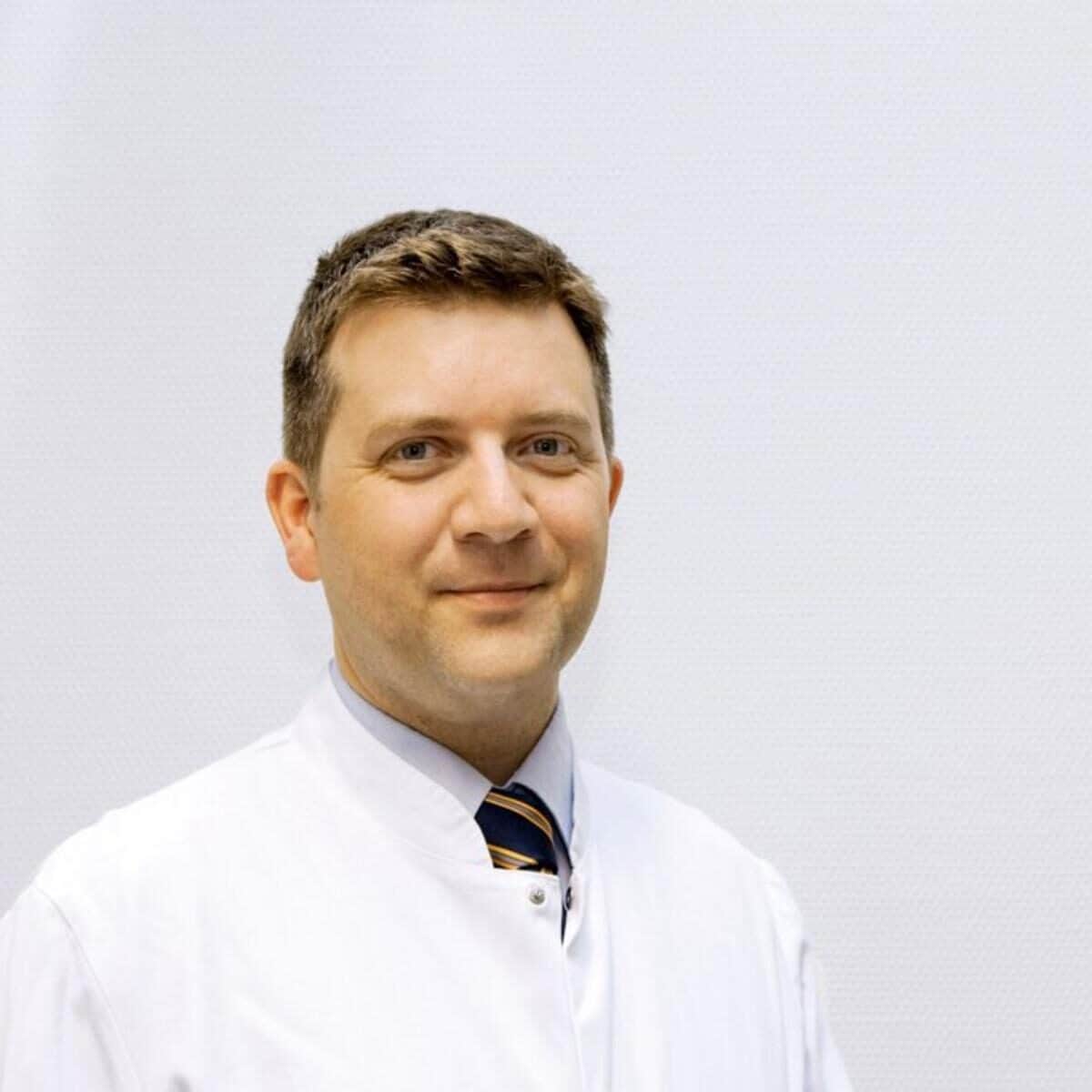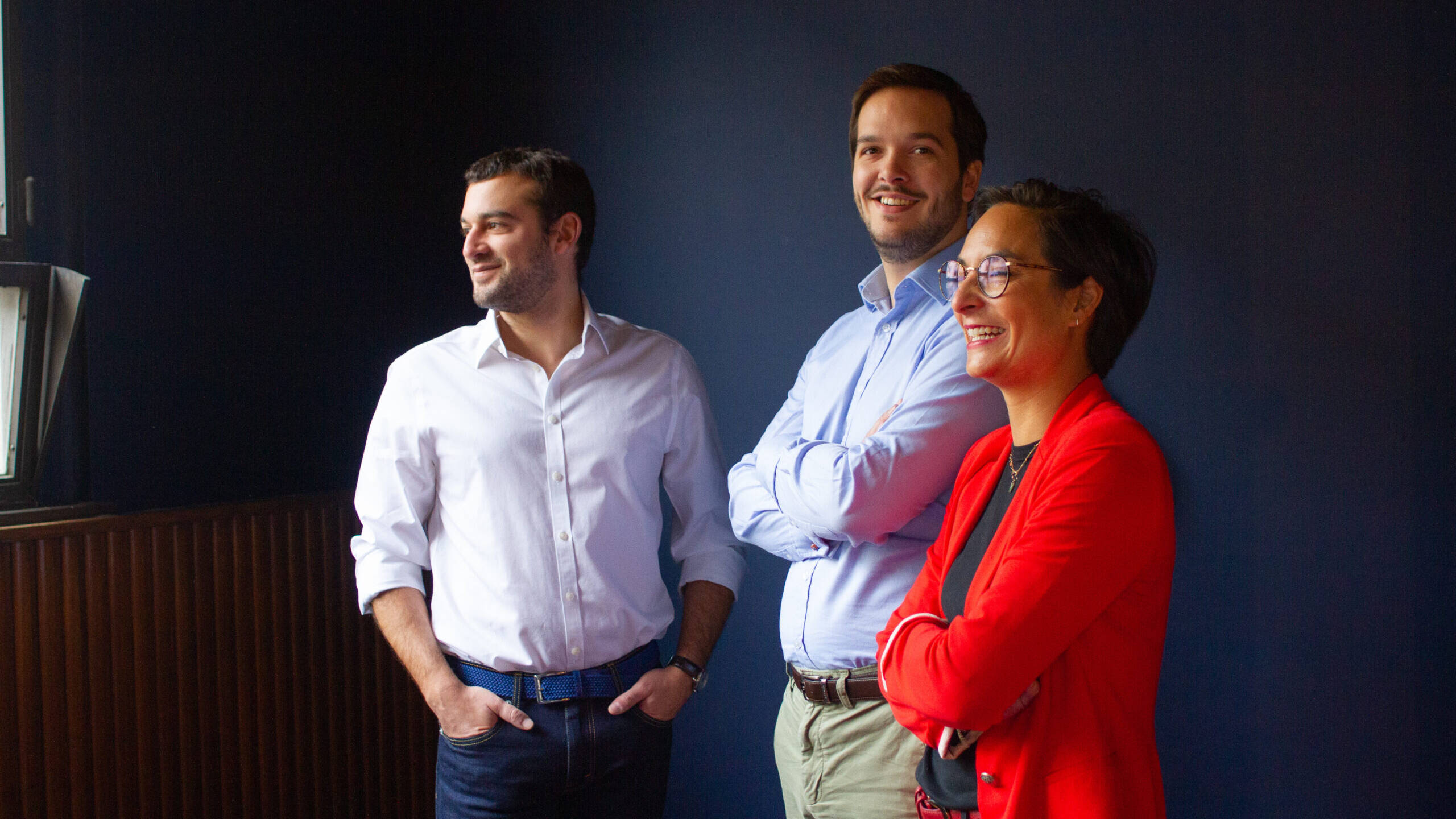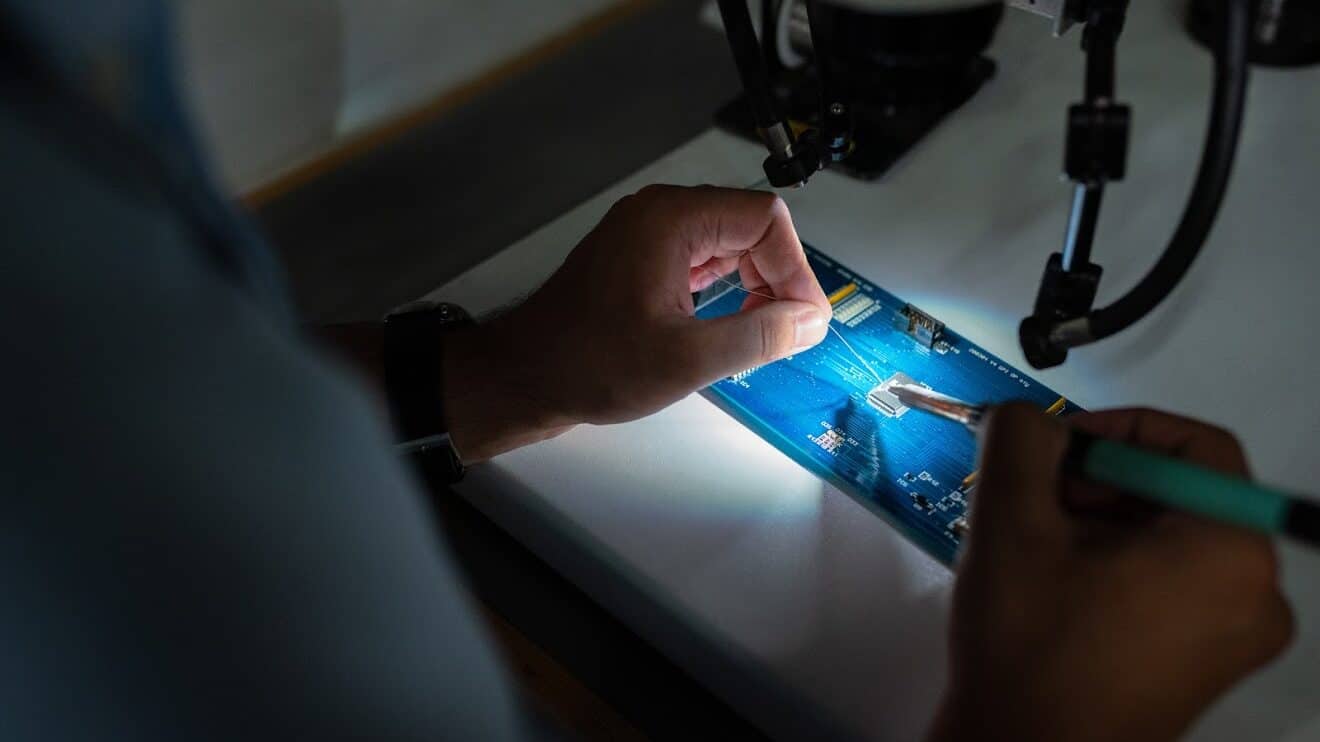Eating right is easier than people think, explains nutritional expert Prof. Christian Sina in this interview. But people need to know how different meals affect them because the reaction is highly individual. Based on this premise, digital health startup Perfood was founded.

Director, Institute for Nutritional Medicine
Prof. Christian Sina is the founding director of the Institute for Nutritional Medicine at the University Medical Center Schleswig Holstein. Christian studied Medicine in Rostock, Aarhus and at Brown University. He co-founded Perfood in 2017 together with Dominik Burziwoda, Dr. Christoph Twesten and Dr. Torsten Schröder in Lübeck.
What does a Professor of Nutritional Medicine eat for breakfast?
This morning I had some oats with raisins. I made this choice because it keeps me sated until lunch and I know that if I ate some bread, no matter if white or whole grain, it wouldn’t last that long.
How did you become a professor in the field of nutritional medicine?
I’m a gastroenterologist by training, and I was given the opportunity to build up the institute together with its own study program. A once in a lifetime opportunity!
Physicians have long shied away from nutrition because there was simply not enough data to work with. When my team and I started out, we wanted to bring the same evidence-based approach used in medicine to the field of nutrition and in particular nutritional medicine.
How difficult is it to eat healthily?
It is much less complicated than people think, even for someone like me who doesn’t cook a lot. The problem with many diets is that they don’t taste very well or can’t be easily integrated into normal life. People need to make too severe changes to stick to a diet. Moreover, some dietary recommendations are correct on average, but completely false on an individual level, which is why people often don’t receive the gain for their pain. Our goal with Perfood is to enable better nutrition in a way that is compatible with modern life. It looks deceptively simple for the user, but to get to the personalized recommendations we work with some deep technology.
“Some dietary recommendations are correct on average, but completely false on an individual level.”
How does food affect health?
We know from medicine that medications have a measurable effect on the metabolism and, in turn, on the immune system. The same is true, albeit to a lesser extent, for food. What we measure with Perfood is the blood glucose level. If it spikes and falls, then we get negative health effects. How high that spike is for any given food is different from one person to another. This has been proven by a study of the Weizmann Institute in 2015 that covered 1,000 people. The reason for the different reactions is the gut microbiome that is also different from one person to another. The findings were confirmed by another study by the King’s College which was published this year. It also found other influencing factors affecting diet-dependent metabolisms such as the circadian rhythm and the level of physical activity.
How was Perfood founded?
From medical research, we know what harm an unhealthy metabolism can cause. We also know what health improvements are possible to achieve with the right nutrition. However, we lacked scalable and easy-to-use solutions to harvest this potential. With our company, we’re building a pipeline of digital therapeutics with personalized nutrition at its core technology. There is huge potential in digital therapeutics these days and with the technology we developed and filed for a patent, we have all the tools at hand to build a platform for digital therapeutics and spearhead this revolution. At the same time, we’re building the largest deep phenotypic dataset with medical questionnaires and records as well as readouts from the blood glucose measures, gut microbiome and more -omics to come.
So you can improve your system over time?
Yes. We have a broad informed consent of 95% of the clients that we can use the data for scientific interpretation. We’re also working on automating the analysis, which isn’t as trivial as it sounds, and have filed a patent application for this. For several foodstuffs, we already have a very high predictive power of our algorithms. Our core business is human metabolism.
You also take stool samples to analyze the gut microbiome of your customers. How much is known about its relevance for personalized nutrition?
We’ve decided to include these tests from the start because we’re convinced that it will play a role eventually. What we can say is that high bacterial diversity is a factor for good health, and a low diversity is a warning sign. We also train algorithms to predict glycemic responses to food and the gut microbiome is a great ingredient for it. We also believe in the great phenotypic potential of the microbiome.
So what’s the point in including these samples in your kit?
We are convinced that the bidirectional relation of diet and microbiome will lead to better therapies in the future e.g. by promoting the growth of defined bacterial species in an individual setting. Propionic acid is a case in point, it is a postbiotic that gets produced by certain bacteria in the microbiome, and it can have positive effects on the treatment of multiple sclerosis. If we know what specific nutrients an individual person needs to promote the growth of propionate producing bacteria we could help to treat multiple sclerosis at a personalized level. The same is true for many other gut microbiome dependent diseases such as obesity, diabetes, autoimmunity and cancer in which bacterial derived metabolites and proteins play a crucial role.
However, this is at an early stage with more research needed in this field and we are happy to be at the forefront of this field with our rich dataset.
Your goal is not just to help healthy people improve their nutrition, but also to achieve medical results thanks to a change in diet. How is that possible
There are several indications we’re after. The vision is to have a personalized nutrition-based digital therapy that is equally effective as a medication. For personalized nutrition with optimizing blood glucose levels, we have strong indications that this is already working. However, other approaches to personalized nutrition will follow. This is based on the assumption that the combination of specific nutrients as part of our diet can have even greater effects on our metabolism and our gut microbiome as certain medications. The proof of this concept is already in the scientific literature. Now, our task is to bring this concept into clinical reality.
What indications are you targeting?
The first product, which should clear the regulatory hurdles in the next couple of months, is migraine. We know from the literature that there is a clear relationship between migraines and blood glucose levels. Our hypothesis was that if Perfood can achieve a stabilization of the blood sugar level, this should be beneficial for people suffering from migraines. We surveyed our user and saw great improvements in migraine symptoms, absence of work and use of pain reliefs. These improvements have been at levels of modern pharmaceuticals, which is why we’re very bullish on this product.
What does it mean if your solution gets approved as a digital therapy
Being approved as a digital therapy in Germany means access to 70 million insured people. It means, that more than two million patients with migraine can get the product prescribed by their physician without having to pay a dime for it. This is great because providers of digital therapies get the benefits of pharmaceuticals without the limitations, such as long randomized clinical trials and approval processes. Moreover, restrictions on advertising for pharmaceuticals do not apply to digital therapies meaning that you can target both, physicians, and patients.
What are the other indications you target?
We are most excited about female infertility and cancer. There is great research out there that gives solid ground for assuming that our solution can be highly effective in treating a specific form of female infertility and supporting cancer drugs. We have various other diseases in our pipeline, obviously diabetes is one of them and a huge market.
Which one comes next in your pipeline?
Clearly, female infertility. The problem is huge with more than 1 million affected women in Germany alone. The disease burden is incredibly severe with very low progress and years of treatment. The cost of treatment is immense and it puts a huge psychological burden on the patients. We have done research on this last year and are very excited about the data. The development of the product was funded with a 400k € non-repayable grant and we intend to launch in 2022. We believe the product could be a game-changer in the treatment of the disease.
Written by
WITH US, YOU CANCO-INVEST IN DEEP TECH STARTUPS

Verve's investor network
With annual investments of EUR 60-70 mio, we belong to the top 10% most active startup investors in Europe. We therefore get you into competitive financing rounds alongside other world-class venture capital funds.
We empower you to build your individual portfolio.
More News
08.02.2021
“Collaboration is beneficial for all of us”
In this interview, Nicole Walker explains why she joined BEKB as Head of Innovation and why the cantonal bank joined Swiss Immo Lab to invest in startups.
26.11.2020
Verve Ventures partners with the leading Belgian business angel network BeAngels
The Belgian business angel network BeAngels and Verve Ventures are joining forces to speed up fund-raising and the development of European startups. Through an exclusive partnership, BeAngels will offer Belgian investors access to the state-of-the-art platform developed by Verve Ventures and will contribute to sourcing new deal flow from Belgium as well.
04.01.2019
“I’m interested in everything technical”
Business angel Oliver Weidmann was always eager to try out new things. He tells us how he invests in startups, what a good entrepreneur needs, and what the upside of failure is.
Startups,Innovation andVenture Capital
Sign up to receive our weekly newsletter and learn about investing in technologies that are changing the world.




